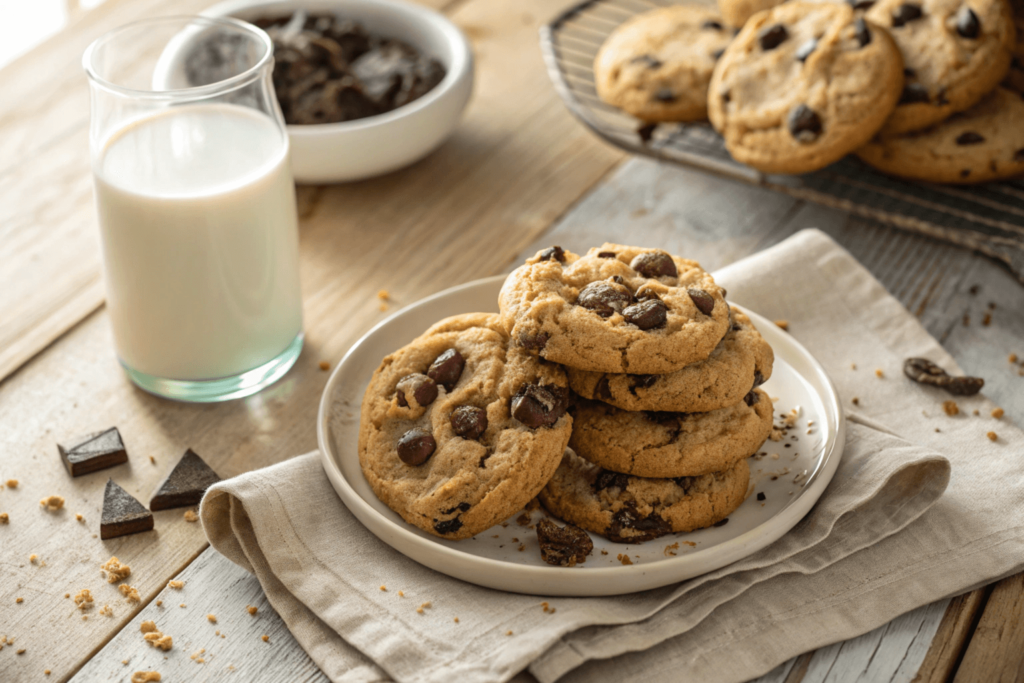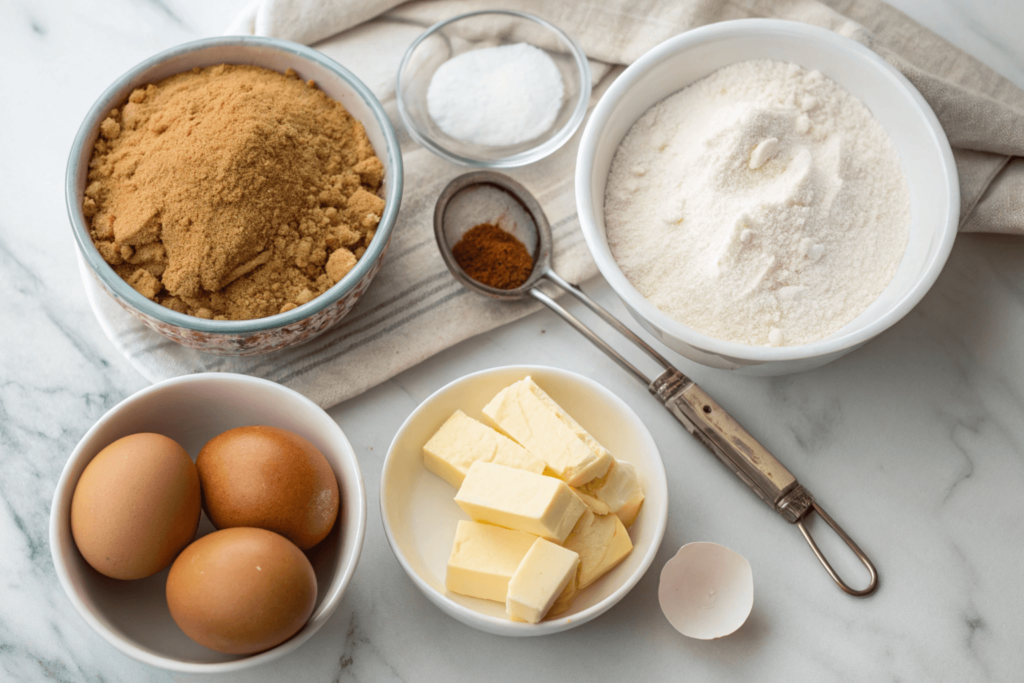
There’s something undeniably magical about biting into a soft, chewy cookie that practically melts in your mouth. In fact, soft cookies feel like a warm hug, don’t they? However, have you ever baked a batch, only to find that they turned rock-hard by the very next day? It’s incredibly frustrating, isn’t it? So, what’s the secret ingredient to keep cookies soft and chewy? Knowing the secret ingredient to keep cookies soft can change your baking game entirely. Is it primarily about the type of sugar, or could the fat be the ultimate game-changer? Perhaps, the secret ingredient to keep cookies soft lies in something completely unexpected. To uncover the truth about the secret ingredient to keep cookies soft, let’s explore the science, the essential ingredients, and the best tricks to baking soft, bakery-style cookies that stay tender and delicious for days to come.
Table of contents
- The Importance of Soft Cookies: Why Texture Matters
- The Secret Ingredient to Keep Cookies Soft
- Key Ingredients for Soft Cookies
- Baking Techniques for Perfectly Soft Cookies
- How to Store Cookies to Keep Them Soft
- Common Mistakes That Make Cookies Hard
- Soft Cookie Recipes You’ll Love
- Tips for Perfecting Soft Cookies Every Time
- Conclusion
- FAQs
- Final Thoughts
The Importance of Soft Cookies: Why Texture Matters
Why Soft Cookies Are a Favorite Among Americans
Soft cookies have a way of taking us back to our childhoods. Remember those gooey chocolate chip cookies you’d snag fresh out of the oven? That nostalgic softness isn’t just about taste—it’s about the way they feel. A soft cookie is comforting, satisfying, and perfect with a glass of cold milk. Honestly, nobody gets excited about biting into a cookie that’s dry or crumbly. It’s the soft texture that makes cookies feel homemade and irresistible.
The Science Behind Cookie Softness
Softness in cookies comes down to one key factor: moisture. Without enough moisture, cookies turn out dry and hard. The balance of fat, sugar, and liquid ingredients in your recipe plays a huge role in trapping that moisture. The baking process also affects this balance—bake too long, and you lose moisture; bake just right, and you lock it in.
The Secret Ingredient to Keep Cookies Soft
When it comes to soft cookies, there’s no one magic ingredient—it’s a combination of factors that work together to create that perfect texture. However, a few ingredients stand out for their ability to retain moisture and make cookies soft for longer.
Brown Sugar: The Unsung Hero
If you’ve ever wondered why some cookie recipes call for brown sugar, here’s the deal: brown sugar contains molasses, which adds moisture to the dough. This is why cookies made with brown sugar are softer than those made with just white sugar. The molasses not only helps retain moisture but also adds a slight caramel flavor, making your cookies even more delicious.
Butter: The Ultimate Softener
Butter is another star player in soft cookies. Its high fat content adds richness while locking in moisture. However, the type of butter you use matters. Stick to unsalted butter for better control of flavor, and always make sure it’s at room temperature to blend evenly with your sugar.
Cornstarch: The Texture Transformer
Cornstarch might sound like an odd addition, but trust me, it works wonders. Just a teaspoon or two in your dough helps soften the structure of the cookies, giving them that melt-in-your-mouth texture without making them too cakey.
Extra Egg Yolks: The Secret Boost
Egg yolks are packed with fat, which is great for creating soft cookies. Adding an extra yolk (while skipping the white) enhances richness and softness, making your cookies almost fudgy.
Key Ingredients for Soft Cookies

Here’s a quick overview of the ingredients that can make or break the softness of your cookies. Consider this your checklist when baking your next batch:
| Ingredient | Purpose |
|---|---|
| Brown Sugar | Adds moisture and a slight caramel flavor. |
| Butter | Provides richness and locks in moisture. |
| Cornstarch | Softens the cookie’s structure for a tender texture. |
| Egg Yolks | Enhance richness and keep cookies soft. |
| Milk or Cream | Adds extra moisture to the dough. |
| Vanilla Extract | Boosts flavor while complementing the sweetness. |
Baking Techniques for Perfectly Soft Cookies
Soft cookies aren’t just about the ingredients—they’re also about how you bake them. Even the best dough can turn into hard cookies if you don’t handle it correctly.
Set the Right Oven Temperature
The ideal temperature for soft cookies is usually around 325°F. Baking at a slightly lower temperature helps the cookies cook evenly, keeping the edges soft and the centers gooey. If your oven runs hot, invest in an oven thermometer to make sure the temperature is accurate.
Don’t Overbake
This is a game changer! Pull your cookies out of the oven while they’re still slightly underdone in the center. They’ll continue to cook on the baking sheet as they cool, which prevents them from becoming too dry.
Master the Cooling Process
After baking, let your cookies rest on the baking sheet for a couple of minutes before transferring them to a wire rack. This short resting time locks in the moisture and prevents the cookies from breaking apart.
How to Store Cookies to Keep Them Soft
Once you’ve baked the perfect batch of soft cookies, the last thing you want is for them to go stale. Proper storage is key to maintaining that softness for days—or even weeks.
Use Airtight Containers
The golden rule for cookie storage is keeping air out. Airtight containers prevent moisture from escaping, which keeps cookies soft and chewy. If you’re stacking cookies, use parchment paper between layers to avoid sticking.
The Bread Trick
This hack is pure genius! Place a slice of bread in the container with your cookies. The bread releases just enough moisture to keep the cookies soft without making them soggy.
Freeze for Future Enjoyment
Freezing is a great way to keep cookies soft for the long haul. Simply store them in a resealable freezer bag, and when you’re ready to eat, let them thaw at room temperature. They’ll taste just as fresh as the day you baked them.
Common Mistakes That Make Cookies Hard
It’s not just about what you do right—avoiding common mistakes is just as important for baking soft cookies.
Too Much Flour
Overmeasuring flour is one of the biggest culprits behind hard cookies. Always use a light hand or, better yet, a kitchen scale to measure your ingredients accurately.
Overmixing the Dough
Mixing your dough too much activates the gluten in the flour, which can make your cookies tough. Mix just until everything is combined.
Skipping Brown Sugar
If you’re only using white sugar, you’re missing out on the moisture-boosting magic of brown sugar. Always include at least some brown sugar in your recipe.
Soft Cookie Recipes You’ll Love
Classic Chocolate Chip Cookies
Chocolate chip cookies are a classic for a reason. Use a mix of brown sugar and white sugar, and add a teaspoon of cornstarch for extra softness. Don’t forget to sprinkle a little sea salt on top for a flavor boost.
Peanut Butter Cookies
For a soft twist on peanut butter cookies, use creamy peanut butter and add an extra egg yolk. The result? Cookies that practically melt in your mouth.
Oatmeal Raisin Cookies
Oatmeal raisin cookies don’t have to be dry! Add a splash of milk to your dough and bake at a lower temperature for a soft, chewy texture.
Tips for Perfecting Soft Cookies Every Time
- Use Fresh Ingredients: Stale flour or baking soda can ruin your cookies, so always use fresh ingredients.
- Chill the Dough: Letting your dough chill for at least 30 minutes helps the flavors meld and prevents cookies from spreading too much.
- Experiment: Every oven is different, so don’t be afraid to tweak temperatures and bake times until you find what works best.
Conclusion
Baking soft cookies isn’t just about following a recipe; it’s about understanding the little tricks and techniques that make all the difference. From choosing the right ingredients, like brown sugar and butter, to carefully watching your bake time, each step works together to create cookies that are irresistibly soft and chewy. It’s not rocket science, but it does require attention to detail and, let’s face it, a bit of trial and error.
The secret ingredient? Well, it’s not just one thing. It’s about combining moisture-rich ingredients, using the right baking techniques, and storing your cookies properly to keep them fresh and tender. Brown sugar provides that all-important moisture boost, while cornstarch softens the texture without making the cookies feel cakey. Even little hacks, like adding a slice of bread to your cookie container, can make a big difference.
When it comes down to it, soft cookies are all about balance. With these tips in hand, you’ll never have to deal with hard, disappointing cookies again. So, grab your apron, preheat that oven, and start baking. Your perfectly soft cookies are just a batch away, and trust me, they’ll be worth every bite.
FAQs
- How can I keep cookies soft for longer?
Store them in an airtight container with a slice of bread or a few marshmallows to retain moisture. - What makes brown sugar so important for soft cookies?
The molasses in brown sugar adds moisture, which helps keep cookies soft and chewy. - Can I make soft cookies without butter?
Yes, but you’ll need to substitute with another fat, like shortening, to maintain the moisture. - Why are my cookies turning hard overnight?
Exposure to air causes moisture loss, so be sure to store them in an airtight container. - What’s the best way to re-soften cookies?
Place a slightly damp paper towel over them and microwave for a few seconds to restore softness.
Final Thoughts
Soft cookies are more than just a dessert; in fact, they’re a little piece of comfort wrapped in sweetness. Whether it’s for a holiday gathering, a bake sale, or even a quiet evening at home, nothing beats the joy of biting into a cookie that’s perfectly soft and chewy. And honestly, getting it right doesn’t have to be complicated. By combining the right ingredients—like moisture-packed brown sugar, rich butter, and even a secret pinch of cornstarch—you can easily take your cookies from average to amazing.
However, let’s not forget the importance of baking techniques! From setting the oven to the correct temperature to pulling your cookies out at just the right moment, every small detail truly adds up. Furthermore, once your cookies are baked to perfection, proper storage—such as using airtight containers or trying the clever bread slice trick—can help keep them soft for days.
At the end of the day, the magic of soft cookies lies in the little things: experimenting, tweaking, and maybe even sneaking a bite of dough along the way. So, roll up your sleeves, start baking, and don’t be afraid to make a few mistakes. After all, practice not only makes perfect but also ensures deliciously soft cookies every single time. Your cookie jar is waiting!
For more delicious recipes and culinary tips, explore the collection of recipes available on our website.
